|
|
| Pottery |
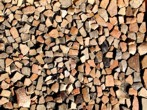 Of all the objects Neolithic people used in their daily lives, pottery plays an eminent role due to its high level of preservation and because of the plethora of meanings it contains. Pots are useful objects, the products of a technological tradition, and through their production and use they acquire special meaning. The study of pottery offers information on the basic fields of human activity, such as economy, the system of production and exchange, and the cultural identity of the producers and users of the pottery. In addition, it significantly aids the dating of archaeological remains. Of all the objects Neolithic people used in their daily lives, pottery plays an eminent role due to its high level of preservation and because of the plethora of meanings it contains. Pots are useful objects, the products of a technological tradition, and through their production and use they acquire special meaning. The study of pottery offers information on the basic fields of human activity, such as economy, the system of production and exchange, and the cultural identity of the producers and users of the pottery. In addition, it significantly aids the dating of archaeological remains. |
| |
| Preliminary examination |
Within the framework of the excavation, the ceramic analysis is carried out at two levels. The first level concerns the examination of the morphological and technological characteristics of the entire pottery assemblage that comes from each excavation unit. 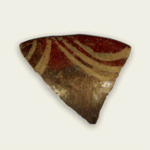 At this stage an emphasis is placed on the observation of morphological and stylistic characteristics which give information for the dating of the pottery and the excavation units. In addition, an examination is made of the taphonomy of the pottery, which gives an indication of the form of the depositions at the Neolithic site. Finally, elements concerning the use of the pots, and by extension the use of the space from which they came, are noted. At this stage an emphasis is placed on the observation of morphological and stylistic characteristics which give information for the dating of the pottery and the excavation units. In addition, an examination is made of the taphonomy of the pottery, which gives an indication of the form of the depositions at the Neolithic site. Finally, elements concerning the use of the pots, and by extension the use of the space from which they came, are noted. |
| |
| Preliminary observations |
| These first observations contribute to the dating of the site and to the distinguishing of the occupation phases of the hill. In addition, they offer a fair amount of information about the technology of the pottery and for the changes in their production, which take place with the passing of time. At the same time, they offer information about the daily activities and cultural identity of the inhabitants, as well as on their relationships with other regions. |
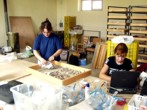 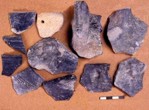
|
| |
| Macroscopic examination |
| The second level of pottery analysis concerns the detailed study of all the characteristics of the pottery in its entirety. The modern study of pottery includes the macroscopic study of the morphological, technological and stylistic characteristics of the pots. Initially the shape and size of the pot is recorded, which gives details on their morphology. Observations are noted on the consistency of the ceramic material, the method of construction, the working of the surface, the baking, and the decoration, which all give information about the technology of the pottery. Finally, the themes and the colours of the decoration constitute the stylistic elements of the characteristics. The above observations are analysed statistically and contribute to the essential understanding of the use and technical choices of the inhabitants of the Neolithic site, of their perceptions, and of their very cultural and individual identities. |
| |
| Laboratory studies |
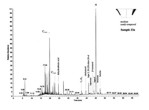 The laboratory analyses complete the picture. The so-called petrographic and chemical analysis of the clays and of the raw materials used in decoration gives information on the technology of pottery (e.g. they indicate the variformities of the recipes used by the potters, the sources of the raw materials and the provenance of the clay, etc.) which are indications of the cultural and geographic provenance of the pots. In this way, the relationships between people in the different areas are detected, exchange networks are reconstructed, and so on. At the same time, chemical analyses of food residues give information on the types of foods that were cooked in the pots and reveal the importance certain foods may have had for members of the community. Furthermore, they reveal methods of food preparation as well as the variety of foods eaten. These analyses offer the only secure indications for the consumption of dairy products and vegetables in these communities, of which we have neither examples nor written sources. The laboratory analyses complete the picture. The so-called petrographic and chemical analysis of the clays and of the raw materials used in decoration gives information on the technology of pottery (e.g. they indicate the variformities of the recipes used by the potters, the sources of the raw materials and the provenance of the clay, etc.) which are indications of the cultural and geographic provenance of the pots. In this way, the relationships between people in the different areas are detected, exchange networks are reconstructed, and so on. At the same time, chemical analyses of food residues give information on the types of foods that were cooked in the pots and reveal the importance certain foods may have had for members of the community. Furthermore, they reveal methods of food preparation as well as the variety of foods eaten. These analyses offer the only secure indications for the consumption of dairy products and vegetables in these communities, of which we have neither examples nor written sources. |
| |
| Stage of research |
| Neither the macroscopic study nor the laboratory analysis of the pottery has progressed yet, since the investigation of the site is still in progress. However, the initial study has already provided important information on many aspects of the daily lives of the prehistoric inhabitants of Paliambela and has helped us to better understand the position of this specific population within the wider cultural map of the region. |
|
|





